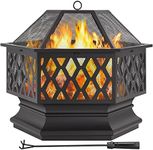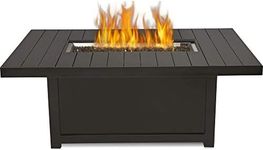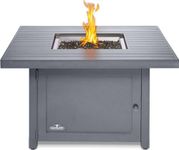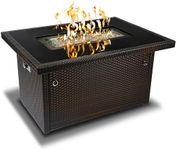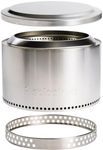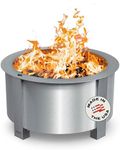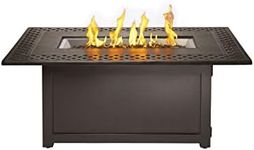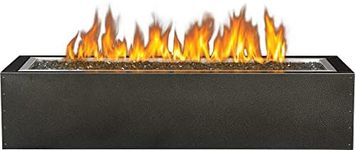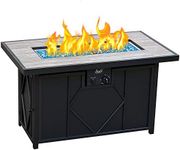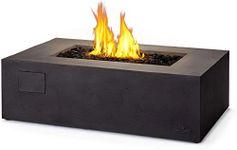Buying Guide for the Best Fire Pits
Choosing the right fire pit can make your outdoor space more inviting and enjoyable. Before you buy, think about how you plan to use your fire pit—whether it's for warmth, cooking, ambiance, or a combination. Consider the size of your space, local regulations, and how much maintenance you're willing to do. Understanding the key features will help you find a fire pit that fits your needs and lifestyle.Fuel TypeFuel type refers to what powers the fire pit, such as wood, propane, or natural gas. This is important because it affects convenience, maintenance, and the kind of experience you get. Wood-burning fire pits offer a traditional campfire feel with crackling sounds and smoke, but require more cleanup and storage for wood. Propane and natural gas fire pits are cleaner, easier to start, and require less maintenance, but they may not provide the same sensory experience. If you want a classic, hands-on fire, wood is best. If you prefer convenience and less mess, go for propane or natural gas.
Size and ShapeThe size and shape of a fire pit determine how much space it takes up and how many people can gather around it. Larger fire pits provide more heat and accommodate more people, but need more space and can be harder to move. Smaller fire pits are portable and fit better in compact areas, but may not provide as much warmth. Shapes like round, square, or rectangular can affect how people sit around the fire. Choose a size and shape that fits your outdoor area and the number of people you expect to host.
MaterialMaterial refers to what the fire pit is made from, such as steel, cast iron, copper, or stone. This matters because it affects durability, appearance, and how much care is needed. Steel is lightweight and often coated to resist rust, but may need protection from the elements. Cast iron is heavy and holds heat well, but can rust if not maintained. Copper looks attractive and resists corrosion, but can discolor over time. Stone or concrete fire pits are sturdy and blend well with landscaping, but are usually permanent. Pick a material that matches your style, climate, and willingness to maintain it.
PortabilityPortability is about how easy it is to move the fire pit. Some fire pits are lightweight and designed to be moved around, while others are heavy or built-in. If you want to rearrange your outdoor space or take the fire pit camping, look for a portable model. If you want a permanent feature, a heavier or built-in fire pit is better. Think about how often you might want to move it before deciding.
Safety FeaturesSafety features include things like spark screens, sturdy bases, and heat shields. These are important to prevent accidents, especially if you have children or pets. Spark screens help contain embers, while heat shields protect surfaces underneath. A stable base prevents tipping. If safety is a concern, look for fire pits with these features and always follow the manufacturer's guidelines for safe use.
Ease of CleaningEase of cleaning refers to how simple it is to remove ash, soot, or debris from the fire pit. Some models have removable trays or ash pans, making cleanup easier. This is important if you plan to use the fire pit often, as regular cleaning keeps it working well and looking good. If you want low maintenance, choose a fire pit with features that make cleaning straightforward.
